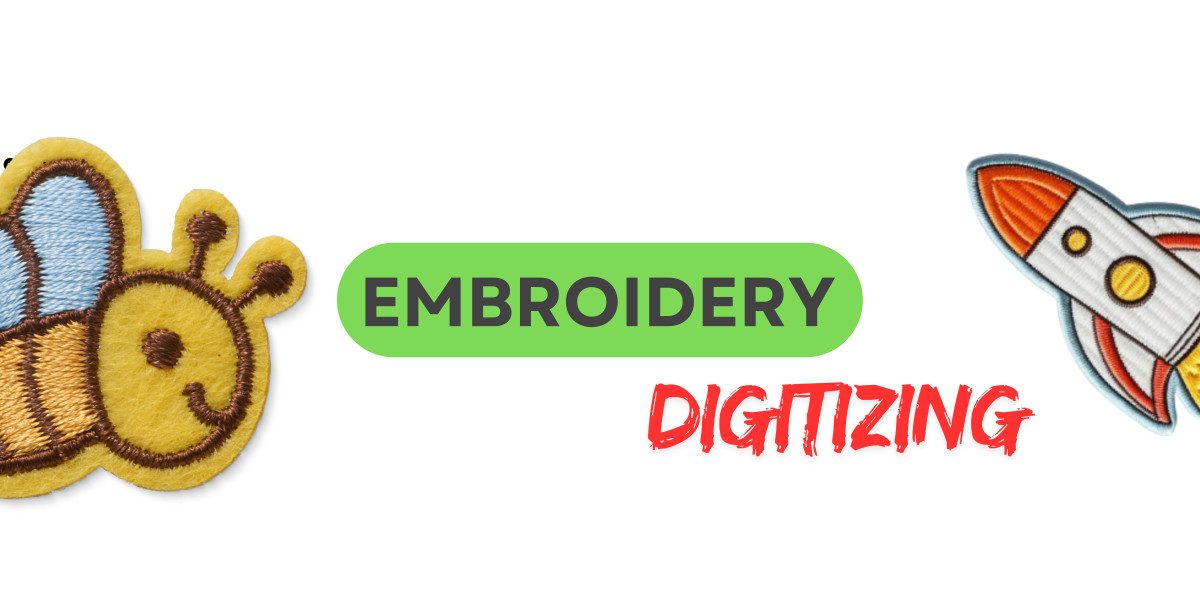Understanding the Art and Process of Embroidery Digitizing
Embroidery digitizing is a fascinating process that bridges the gap between traditional craftsmanship and modern technology. It plays a crucial role in the world of embroidery by converting artwork into a digital format that can be read by embroidery machines. This transformation allows for precise and consistent stitching, making intricate designs possible on various fabrics. In this article, we will explore the basics of embroidery digitizing, the steps involved, its applications, and the future of this essential craft.
1. What is Embroidery Digitizing?
Embroidery digitizing is the process of converting a design, logo, or image into a digital file that an embroidery machine can read and execute. The file guides the machine on how to stitch the design, including the order of stitches, stitch types, and the direction of stitching. This process is essential for creating detailed and high-quality embroidery on textiles.
Before digitizing, designs were manually transferred onto fabric, a time-consuming and often imprecise method. With the advent of digitizing technology, embroidery has become more efficient, allowing for greater precision and the ability to replicate designs consistently across multiple items.
2. The Importance of Embroidery Digitizing
Embroidery digitizing is a crucial aspect of modern embroidery for several reasons:
- Precision and Consistency: Digitizing ensures that designs are executed with precision, maintaining consistent quality across multiple pieces. Whether producing a single item or a large batch, the embroidery will look identical, which is essential for branding and uniformity.
- Time Efficiency: Digitizing significantly reduces the time required to produce embroidered items. Once a design is digitized, it can be used repeatedly without the need for manual tracing or adjustments, making the production process faster and more efficient.
- Complex Designs: Digitizing allows for the creation of intricate and complex designs that would be difficult or impossible to achieve by hand. The software used in digitizing can handle detailed patterns, shading, and text, expanding the possibilities of what can be embroidered.
- Versatility: Embroidery digitizing can be applied to various materials, including cotton, polyester, leather, and more. The digital file can be adjusted to accommodate different fabrics, ensuring that the design is stitched appropriately for each material.
3. The Process of Embroidery Digitizing
The process of embroidery digitizing involves several key steps, each contributing to the final quality of the embroidered product. Here's a breakdown of the process:
- Creating the Design: The first step in embroidery digitizing is creating the design. This can be done by hand or using graphic design software. The design should be clear and well-defined, as this will make the digitizing process smoother.
- Choosing the Right Software: Specialized digitizing software is used to convert the design into a digital format. There are various software options available, each offering different features and capabilities. The choice of software can depend on the complexity of the design and the specific requirements of the project.
- Digitizing the Design: This is the core step where the design is converted into a digital embroidery file. The digitizer determines the type of stitches to be used (such as satin, fill, or run stitches), the order of stitching, and the direction of the stitches. This step requires a good understanding of both the design and the fabric it will be applied to.
- Testing the Design: After digitizing, the design is typically tested on a piece of fabric similar to the final product. This test run helps identify any issues with the stitching, such as gaps, overlapping, or incorrect colors. Adjustments are made as needed to ensure the design stitches perfectly.
- Finalizing the File: Once the design has been tested and any necessary adjustments have been made, the digital file is finalized. This file can then be loaded into an embroidery machine, ready for production.
4. Applications of Embroidery Digitizing
Embroidery digitizing has a wide range of applications across various industries. Here are some of the most common uses:
- Fashion Industry: In fashion, embroidery digitizing is used to add intricate designs to clothing, accessories, and footwear. Designers use digitized embroidery to enhance the aesthetic appeal of their creations, adding texture and detail that stand out.
- Corporate Branding: Many companies use embroidery digitizing to create branded uniforms, promotional products, and corporate gifts. The precision of digitized embroidery ensures that logos and branding elements are reproduced accurately, maintaining a professional appearance.
- Sports Teams: Sports teams often use digitized embroidery to create team uniforms, hats, and other merchandise. The consistency provided by digitizing ensures that every team member's uniform is identical, fostering a sense of unity and pride.
- Personalized Gifts: Embroidery digitizing is also popular for creating personalized gifts, such as monogrammed towels, bags, and apparel. The ability to customize designs makes these gifts unique and memorable.
- Promotional Items: Companies often use embroidered items as promotional products. Digitizing allows for the mass production of these items, ensuring that each one meets the company's branding standards.
5. The Future of Embroidery Digitizing
As technology continues to advance, the field of embroidery digitizing is expected to evolve in several exciting ways:
- Improved Software: Digitizing software is constantly being updated with new features that make the process easier and more efficient. Future software developments may include more intuitive user interfaces, advanced editing tools, and automated features that reduce the need for manual input.
- Enhanced Machine Capabilities: Embroidery machines are also evolving, with newer models offering greater speed, precision, and versatility. Future machines may include more advanced sensors and AI-driven features that further enhance the quality and efficiency of digitized embroidery.
- Eco-Friendly Practices: As sustainability becomes a more significant focus in the fashion and textile industries, there is a growing interest in eco-friendly embroidery practices. This includes using digitizing techniques to minimize waste and choosing sustainable materials for both the fabric and thread.
- Integration with Other Technologies: The future may see greater integration of embroidery digitizing with other technologies, such as 3D printing and laser cutting. These combinations could lead to new forms of textile art and design, pushing the boundaries of what is possible in embroidery.
- Increased Accessibility: As digitizing technology becomes more user-friendly and affordable, it is likely to become accessible to a broader audience. This could lead to a rise in DIY digitizing, with hobbyists and small business owners creating their designs and products at home.
6. Tips for Successful Embroidery Digitizing
To achieve the best results in embroidery digitizing, consider the following tips:
- Understand the Fabric: Different fabrics require different digitizing techniques. Understanding the properties of the fabric, such as its thickness, stretch, and texture, will help you choose the right stitch types and settings.
- Start Simple: If you're new to digitizing, start with simple designs. As you gain experience, you can gradually take on more complex projects. Simple designs are easier to digitize and will help you build your skills.
- Pay Attention to Detail: Small details can make a big difference in the final product. Ensure that your design is clean and well-defined before digitizing, and take the time to adjust stitch settings for the best results.
- Test Your Design: Always test your digitized design on a sample fabric before starting the final project. This will allow you to identify and correct any issues, ensuring that the finished product meets your expectations.
- Keep Learning: Embroidery digitizing is both an art and a science. Stay updated with the latest software, techniques, and industry trends to continuously improve your skills and produce high-quality work.
Conclusion
Embroidery digitizing is a powerful tool that has revolutionized the art of embroidery. By combining traditional craftsmanship with modern technology, digitizing allows for the creation of precise, consistent, and intricate designs on various textiles. Whether you're a professional in the fashion industry, a business owner looking to brand your products, or a hobbyist creating personalized gifts, embroidery digitizing offers endless possibilities. As technology continues to advance, the future of embroidery digitizing looks bright, with new innovations that will continue to push the boundaries of this creative field.



